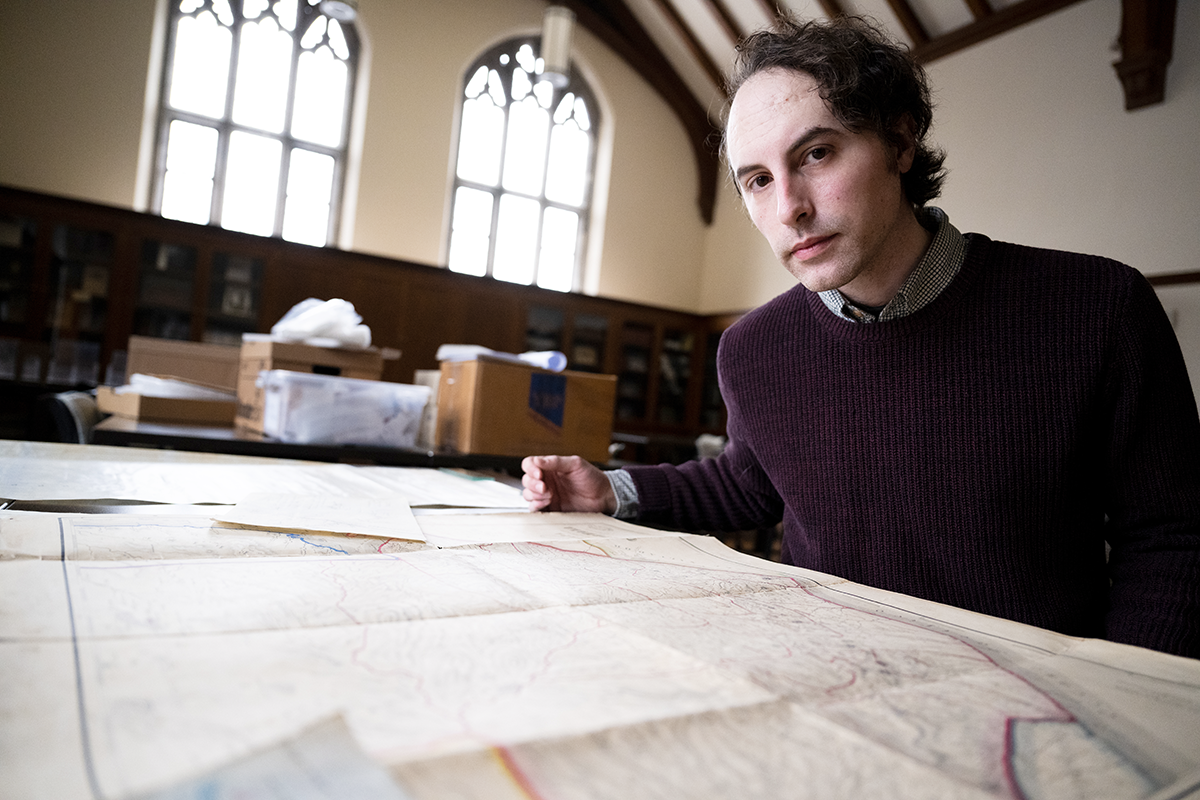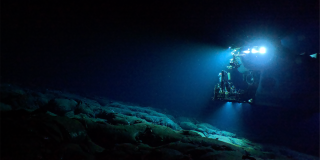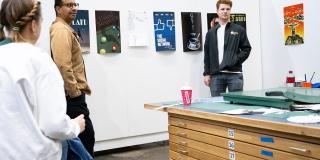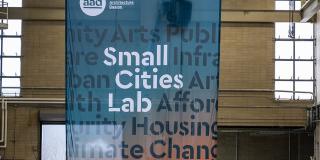
Ph.D. student Casey Kies hopes to cement in history one of Lehigh’s first graduates
For historians, it can be a challenge to empathize with historical subjects and understand their motivations and temperaments.
But second-year history Ph.D. student Casey Kies is finding a lot to admire about Miles Rock, one of the first Lehigh graduates. The legacy of Rock, a cartographer, naturalist, civil engineer and astronomer, provides insight into geopolitics, the role of American diplomacy and questions of sovereignty and territory that emerged in the late-19th- century.
In his lifetime, Rock, Class of 1869, observed the transit of Venus while in Chile and determined longitudes and latitudes as an astronomer, but his culminating accomplishment was defining the Guatemala-Mexico boundary. In 1881, Guatemala and Mexico each claimed land on a 541-mile border of rugged terrain. Although a treaty was signed in September of 1882, a commission was formed the next year to finalize the boundary. It was Rock who led the Guatemalan Boundary Commission.
Somewhat overlooked in history, the multifaceted Rock doesn’t have a Wikipedia entry. But Kies is ensuring Rock’s place in history as he embarks on exploring Rock’s life and legacy. Kies was introduced to Rock when family artifacts arrived at Linderman Library in 2021.
“In a sense,” said Kies, “Rock typifies the very best of what was possible for an ambitious and intelligent American (white man) in the mid-19th century.”
The Miles Rock Collection, he said, “paints such a broad and deep picture of Rock’s life that one can’t help but feel as if they know him on some level after spending time among his papers, photographs and possessions.”
Unlike others who grew up in rural poverty, as he did, Rock traveled extensively and earned a college degree. Born in Lancaster County on Oct. 10, 1840, he was one of 10 children, whose father died when Rock was not quite 5 years old, according to family genealogy and an obituary in Science Magazine. Rock pursued his interests in botany and geology working in a bookstore and spent two years at Franklin & Marshall College. He left to serve in a volunteer Union Army regiment in the Civil War. Returning in 1865, he entered the newly founded Lehigh (the only Lehigh graduate to have served in the Civil War) and graduated with the first class as a civil engineer.
Rock married Susan Clarkson in 1870 and became an astronomical assistant at the Cordoba Observatory in Argentina, where he mapped star observations. He was employed by the U.S. Navy in the West Indies and Central America, where he determined latitudes and longitudes via astronomical observations, and later worked on the U.S. geographical and geological surveys west of the 100th meridian. While working at the U.S. Naval Observatory, he was recommended for the position of astronomical engineer for Guatemala. In 1883, the Guatemalan minister for foreign affairs asked the U.S. government for a recommendation of an engineer-astronomer to trace the boundary with Mexico. Rock was their man.
Mapping the mountainous Guatemala-Mexico frontier was “treacherous,” Kies points out. “Disease and harsh conditions killed off several hundred indigenous laborers employed by the commission, and one Mexican boundary commissioner drowned in the early phase of the work.”
Rock himself nearly drowned on one occasion that he mentions in his diary. Eventually, he was removed from the commission in 1895 “because he had acted on the orders of the Guatemalan government to forcibly remove an illegal timber operation in the disputed area,” explains Kies. “The Mexican government used this opportunity to call for his removal, which seemed to suit their interests in this case because Rock was a particularly ardent defender of the Guatemalan position on the border and embodied a direct connection to the world of North American diplomatic power.”
Later, Rock ended up buying a coffee plantation for financial security for his family. He kept a family home in Washington, D.C., but was in Guatemala when he died on Jan. 29, 1901, at age 61, and was buried in Guatemala City. According to his obituary, hundreds of Guatemalans paid tribute.
Kies believes that Rock’s work in Guatemala was the culmination of his varied interests and skills, combined with “his long experience (and education) in cartography and astronomy, with his personal qualities of determination, physical and moral courage and commitment to arduous and important work.” It also allowed him to pursue other interests, like meteorological observations in Guatemala in cooperation with the U.S. Naval Observatory and studying and lecturing on the subject of Guatemala's forests. He photographed Guatemalan life and culture for the Smithsonian.
This is not Kies’ first time working with Linderman Special Collection in researching a Lehigh alumnus. He catalogued the Frank Lunney Collection, archiving the work of Lunney, a Lehigh alumnus and a Hugo-nominated publisher of science-fiction fanzines who played an active role in the world of self-published science fiction.
When the Miles Rock Collection arrived, Kies was brought back as a project archivist. As an undergraduate, Kies did historical research at Lehigh on the 19th-century Irish nationalist John Mitchel, the basis for his undergraduate history honors thesis, which was awarded a Harmon Prize.
Rock’s great-great-grandsons, David and Chris Grace, personally delivered photos, battlefield letters, diaries, journals that contain pressed plant clippings, maps of the border between Mexico and Guatemala in a leather-bound book and an autograph book from his time at Lehigh, signed by his friend Henry Sturgis Drinker, Lehigh’s fifth president, according to the library’s website. A highlight of the collection is Rock’s Civil War uniform, buttons intact.
The collection has helped Kies relate to Rock on a more personal level. Despite more than 150 years between them, Kies, who was also raised on a farm in Pennsylvania (Bangor), found connections to Rock.
“Like Miles Rock, I’ve always found myself drawn to the pursuit of a fairly specific field, much to the exclusion (for good or ill) of other aspects of day-to-day-life,” Kies says.
He relates to Rock’s sense of humor, noting his “writings, whether in his diaries, letters or his memoir of his travels in Chile, are full of witty and relatable observations on social life, politics and science.”
And yes, the Linderman Special Collections Group has discussed creating a Wikipedia entry for Miles Rock, Kies says. But in the meantime, Kies’ research is bringing Rock to life—and helping to cement his place in history bridging science and politics.
- story by Wendy Greenberg
- image by Christine Kreschollek






